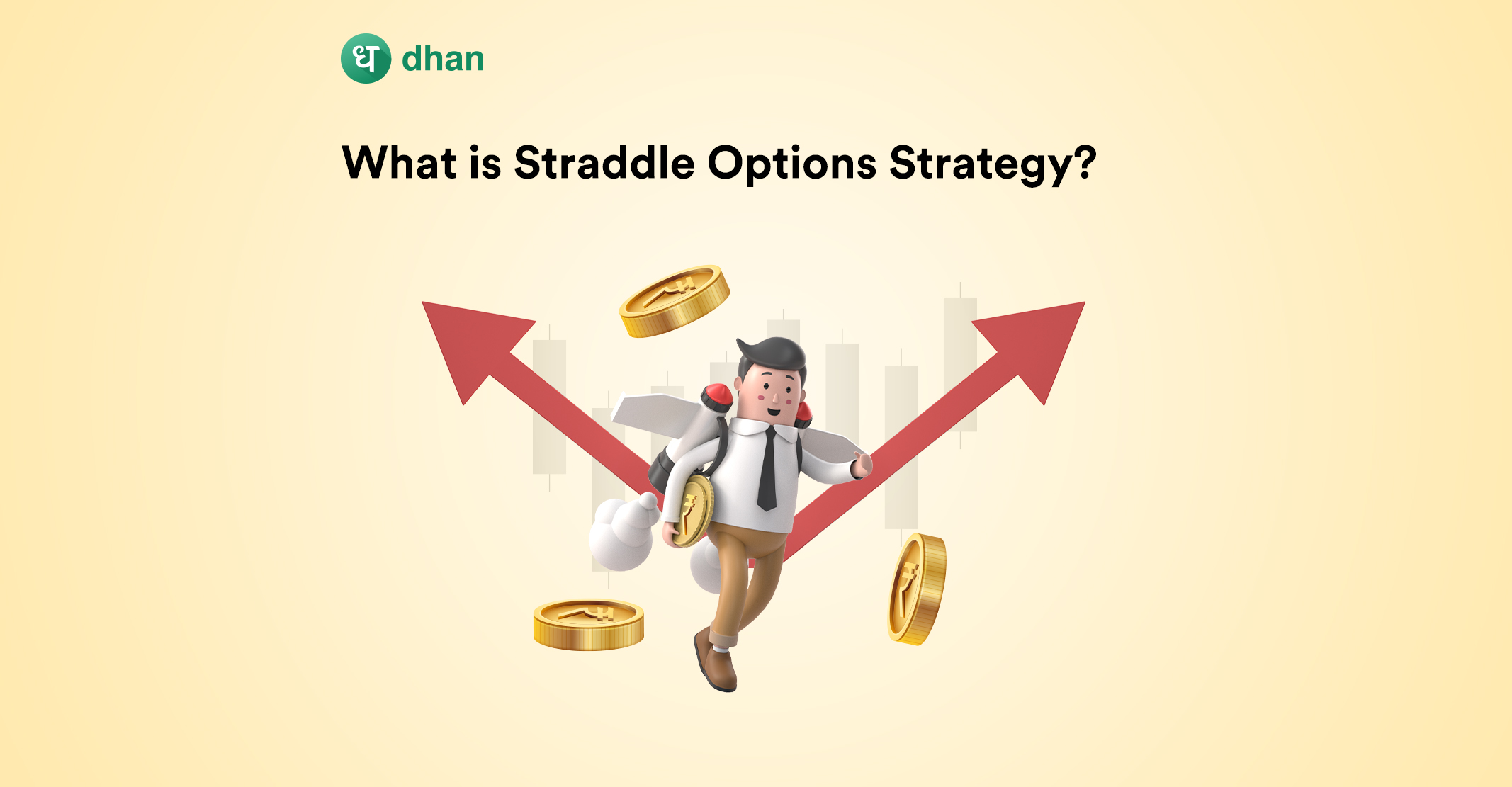There are numerous effective option trading strategies designed to help traders to monitor the market, amplify the returns, and manage a diversified portfolio seamlessly. One such strategy is the straddle options strategy.
The Straddle Options strategy is referred to as a neutral options strategy in which a financial security’s expected volatility and trading range is anticipated by buying two opposing options contracts with similar characteristics.
This strategy can prove effective when there is a significant movement in the price of an underlying asset above or below the price paid to acquire the options. If you want to know more, read on to understand the straddle trading strategy in depth.
What is the Straddle Options Trading Strategy?
The straddle strategy is executed by buying a put option and a call option with the same expiration date and strike price. The underlying security can be anything from stocks to currency pairs.
The goal of using Straddle is to profit off the upward or downward movement of the underlying as long as the movement is significantly above the premium paid to acquire the two types of options contracts.
This strategy is used to forecast:
- How much volatility is anticipated from that particular asset
- The underlying asset’s trading price range within an assertive expiry date
For trading at expiry, you can also implement an expiry-day straddle strategy. The weekly expiry of options contracts happens on Thursdays while the monthly expiry occurs on the last Thursday of the month.
As you may have guessed, there are variations of the Straddle strategy that you can use based on your goals. Let’s discuss some of them in the next section.
Types of Straddle Trading Strategies
Straddle strategy plays a crucial role that helps you accomplish the same market-neutral objective with relative ease. However, before you incorporate this strategy while trading, it is imperative to know all types of straddle trading strategies:
1. Long Straddle
The long straddle involves buying a call and a put at the same strike price and expiration date. This strategy comes into play when traders expect a sharp price movement in financial securities.
However, every trader may or may not be aware of the direction of movement, which can cause a significant rise or abrupt fall during a volatile market. Of course, they can use technical indicators to identify trends.
The main objective of the Long straddle strategy is to solve the direction dilemma by helping traders avoid options trading mistakes.
The biggest challenge is to predict the direction of change. Instead of analyzing whether the underlying asset’s price will rise or fall, it is an ideal choice to rely on a long straddle strategy.
2. Short Straddle
Unlike long straddles, short straddles consist of one short call and short put option having the same strike price and expiration date.
This strategy is practiced for net credit and profits if the underlying asset’s price is between the break-even points while being in the narrow range.
Short straddles can prove to be a lucrative opportunity for a trader when the market is marginally volatile.
This situation enables the traders to collect the premium as a profit by selling the options. However, the probability of profits is limited to the number of premiums a trader can accumulate while shorting the call and put.
Pros of Straddle Trading Strategies
Here are some of the pros of the straddle option strategy.
1. Limited Risk
One of the major benefits of this trading strategy is that you can maximize your profits from it by lowering the risk. But how?
It is because the risk is limited up to the amount of premium paid for options. Bear in mind that this is true only for long straddles. Short straddles carry unlimited risk.
2. Market Volatility
As volatility rises, the prices of options (calls and puts at all strike prices) on that underlying asset also ascend.
This implies that even if you can predict whether the volatility will take the market on a roller-coaster, you will not have to be concerned about the price movement direction.
3. Powerful Strategy Before Big Event
Straddle proves to be a robust strategy when you want to take positions before any big event like a budget session of parliament, election results, or a company’s financial results.
Considering the impact of these events, you can use this strategy to enhance your chances of earning profit. P.S.: Find out if Straddle makes it to the list of best forex trading strategies.
Cons of Straddle Trading Strategies
Let’s check out some of the disadvantages of executing the straddle strategy.
1. Not Suitable for Stable Markets
When the market is stable, applying a staddle may not be beneficial. It is because if the underlying asset’s movement is not more than the amount traders pay (the difference in the amount of premium plus commissions on both option trades).
This may result in no use of the straddle strategy. Executing staddle in stable markets involves relatively high risks and makes a trader prone to losses if both options expire at the money, which turns them worthless.
2. Bigger Price Movements Required
Observing bigger price movements in financial securities is essential to earn decent profits while executing a straddle strategy.
However, it is not always possible to see sharp price fluctuations in the underlying asset’s price. This is where straddle is likely to fail.
Can You Lose Money While Using a Straddle Strategy?
When the price of the underlying asset will not move more than the comparative premiums paid on the options, this is the situation where the trader may face losses.
Another scenario where a trader incurs a loss is when the asset’s price is equal to the strike price at expiration, both options will expire without any worth.
However, the potential loss is limited to the straddle cost plus commission. It is the sole reason the intraday straddle strategy is executed by several traders to maximize gains when the market signals sharp moves and higher volatility.
Speaking of intraday strategies, check out this blog 👉 Intraday Trading Strategies for Beginners
Conclusion
Straddles help you leverage neutral positions to generate returns. The goal of carrying out a Straddle is to buy or sell a call and put with the same characteristics so that up or downward movement may lead to lucrative gains.
The long straddle can be a go-to for beginners and advanced traders. On the contrary, the short straddle strategy is known to be more complex and is typically executed by seasoned options traders.
Either way, it’s important to choose options trading strategies based on your goals and risk appetite. Not to forget, your starting capital and the online trading platform you’re using will also have a bearing on your strategy.
Like this? Then you’ll love:



